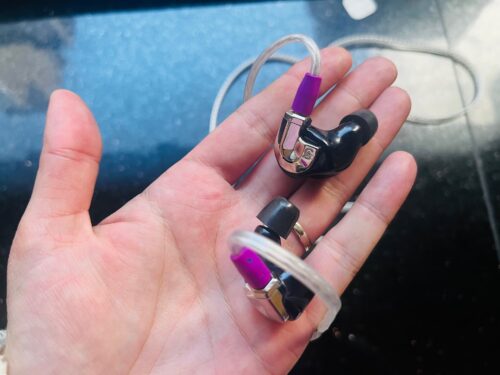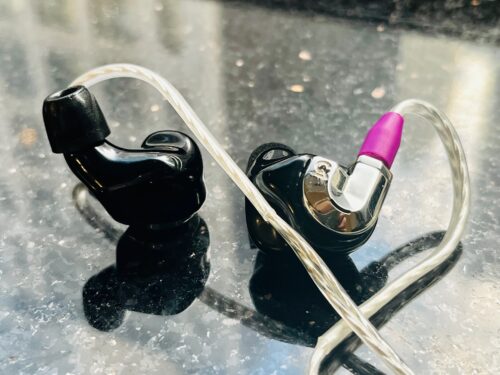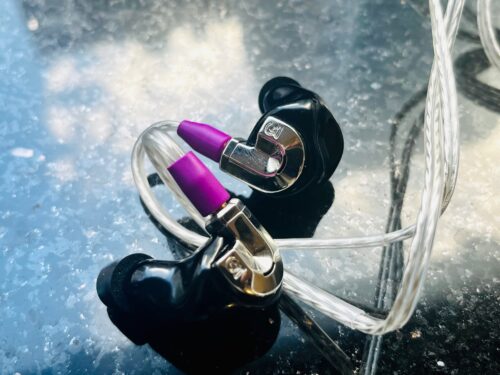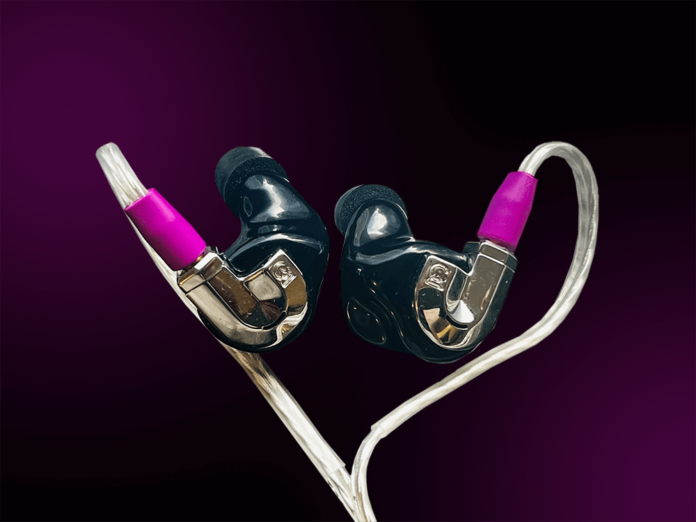Long gone are the days when audiophiles reduced Campfire Audio to a one or two hit wonder brand. In fact, with the release of the new Solaris, Supermoon and Ponderosa, it’s becoming clear that the Company is going through a sonic renaissance of sorts. Campfire Audio’s Boneville is one of the latest releases in the Campfire’s new Chromatic Series. With its Deluxe version falling just above the price of the Andromeda, the Bonneville hopes to carve out its own space as a one-of-a-kind sound signature. What can you expect in terms of design and performance?
What’s in the Box?
- 1 Time Stream Cable (Essential Version: 2.5mm, 4.4mm, 3.5mm terminations available)
- Marshmallow and silicone tips
- Cleaning tool
- Cleaning cloth
- Campfire Audio pin
- Large soft case
- Small dual-pocket soft case for shell scratch protection

Look and Feel
While the shells of the Bonneville may feel a bit larger than others in the Chromatic Series (don’t quote me), they also fit me like a glove. That’s not to say I didn’t feel them firmly nestled in my ears. But they sport a real “stage IEM” fit, with zero room for wiggle or bleed. So, the fit is comfortable, but noticeably snug. In terms of looks, I’m not particularly into the design of Campfire’s Chromatic Series, preferring the unique industrial look of models like the Andromeda and Ara. Still, the Bonneville has an undeniably distinctive appearance that combines the metallic boldness of older models, like the Atlas and Comet, with the ergonomic bulbous housing that reflects a more modern, custom-like aesthetic. The only thing that annoyed me were that the MMCX connectors are a little stiff, making switching around cables kind of a pain.

Design
The Bonneville sports a 4 driver hybrid setup. It implements a 10mm Dual-Magnet dynamic driver for the lows, 1 balanced armature for the midrange, and 2 balanced armatures for the highs. While the Bonneville is still quite easy to drive, it is far less sensitive than some of Campfire’s most IEMs, like the Andromeda. And I found that the Bonneville benefitted from a little extra driving power to fully deliver its resolution potential. For this review, I paired the Bonneville with my Astell & Kern SR 35 (4.4mm connection).

Sound Impressions
Soundstage
Huge, holographic and damn fun. The breadth and boldness of this soundstage is stunning, and in this respect, it almost reminds me of some of Jerry Harvey Audio more majestic sounding IEMs. With respect to imaging, there’s an ever so slight shifting back of instruments, giving an added sense of depth to the stage. The Bonneville’s uber-broad soundstage delivers a 360 degree arena like feel to live performances, especially. But even on more intimate productions, the sense of dimension is palpable. And although I didn’t find the stage to be that tall, there was so much nuance in positioning along the vertical axis that I never felt like I was losing the experience of height. In fact, instrument placement is anally precise in all directions, injecting vibrancy into even the most boring or unvaried mixes.
Low-End
The low-end of the Campfire Audio Bonneville is something I’ve never quite experienced before, and it can take your breath away at times. Starting from the lowest end of the frequency range, the sub-bass frequencies deliver a visceral sensation that extends deep into the chest. But what makes it noteworthy is that, despite its substantialness, the sub-bass is never bloated or overwhelming. Instead, there’s a feeling of control and containment, allowing the higher frequencies to share the stage.
As we move up the frequency range, the bass frequencies offer explosive depth, if not abyss-like darkness, and it’s grander than anything I’ve heard in Campfire’s most recent line-up (though the bass on the Cascara may be even more substantial). For the most part, the bass is able flavor the entire sound signature without actually bleeding into the higher frequencies. But at rare moments, the middle to upper-bass can also cause a slightly veiled effect, especially when it is a primary driving force in the track. Still, in true Campfire fashion, the bass is also grippy and textured. And this quality keeps the presentation tight on modern tracks, lending an added flavor of funk to the mix.
When listening to dramatic classical pieces, like some of Beethoven’s more intense compositions, the bass could be thunderous and, at times, downright frightening. There’s an incredible amount of power and drop here, reminiscent of what Empire Ears can do. However, the Bonneville delivers it with more substance and in a more natural way.
Mids
In the midrange, there’s a pleasing sense of balance that, at the same time, never borders on mundane. The upper mids don’t sit too far forward, so vocals feel well integrated into the overall mix rather than protruding too prominently. And the lower mids, though not as obvious, don’t come across as excessively recessed. In this range there are no dramatic peaks or valleys, resulting in a smooth, warm, and all-encompassing profile.
You won’t hear an abundance snap in this range. Instead, the Bonneville consistently exudes a steady and controlled energy that never wavers. That being said, Campfire is never short on impact, and heavy snares that hit the middle frequencies still sound powerful and punchy.
For the most part, the midrange is pristine, delivering impeccable layering and outstanding definition and separation. That said, on occasion, the low mids may have a slightly veiled effect. For instance, when listening to a track like Lorde’s “Green Light,” you might notice that her vocals have a slightly cloudy flavor in the mid to lower midrange frequencies. It’s worth noting that this phenomenon is infrequent and doesn’t significantly impact the overall listening experience. And for sure, the upper mids remain consistently crystal clear, tastefully balancing the weighty low frequencies, to create a well proportioned, yet energetic profile.
Highs
The high frequencies are strikingly transparent, lending an airy and ethereal quality to vocals, brass instruments, and woodwinds. There’s a distinctive luminance to the highs, giving the treble a radiant aura. And although there’s more crispness than sparkle at the highest frequencies, there is still a shiny flavor to the overall presentation.
While the very highest treble peaks can almost verge on sharpness, they manage to avoid crossing the line into being piercing to the ears or causing listening fatigue. And as we move into the highest registers, there’s a noticeable thinning out or lightening of the sound, which lends an added degree of spaciousness to this range.
Summary
You’ve got to hand it to Campfire. When they make an IEM, it sounds like nothing else on the market. And the Bonneville is a prime example of a distinctness in sound signature that can’t be mimicked by any other brand. With a dark and explosive bass, warm, yet clean mids and luminous highs, the Bonneville carves out a distinctive place in the Campfire line-up. Add to that a killer soundstage and a unique Campfire character that’s undeniably its own, and you’ve got a one-of-a-kind IEM that’s insanely fun to listen to.

You can buy the Campfire Audio Bonneville at Audio 46.

Compare the ranking of various headphones, earbuds and in-ear monitors using our tools.
Discuss this, and much more, over on our forum.
---MAJORHIFI may receive commissions from retail offers.















